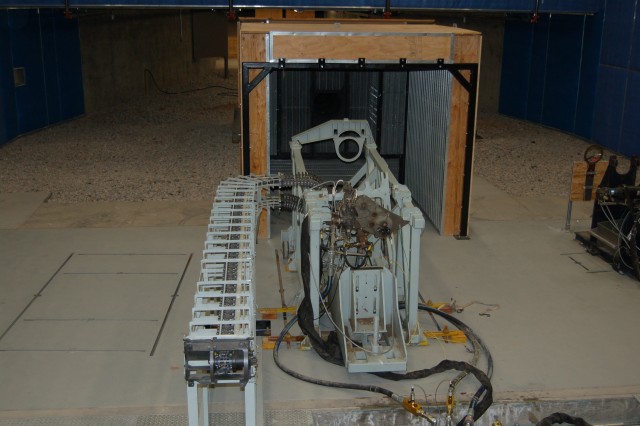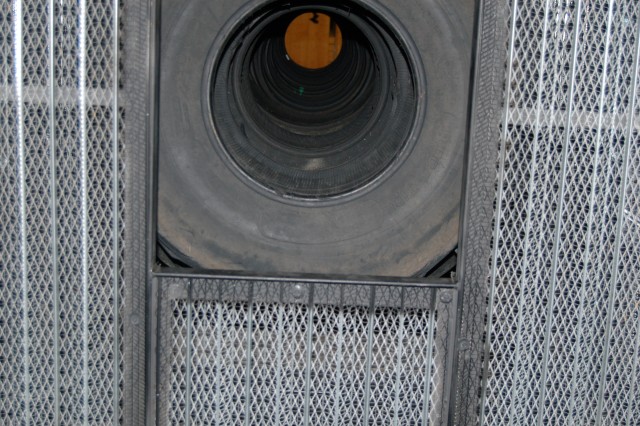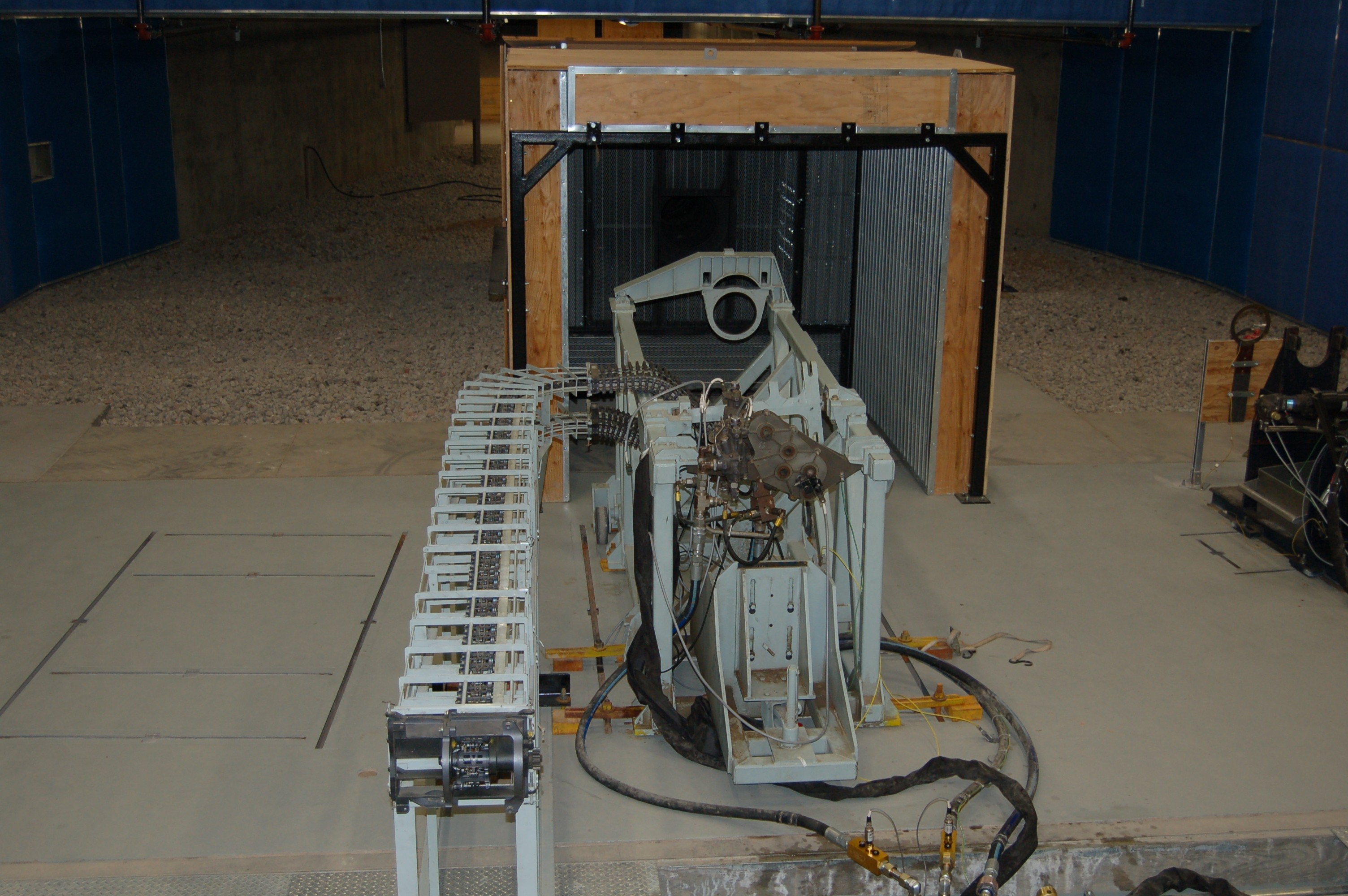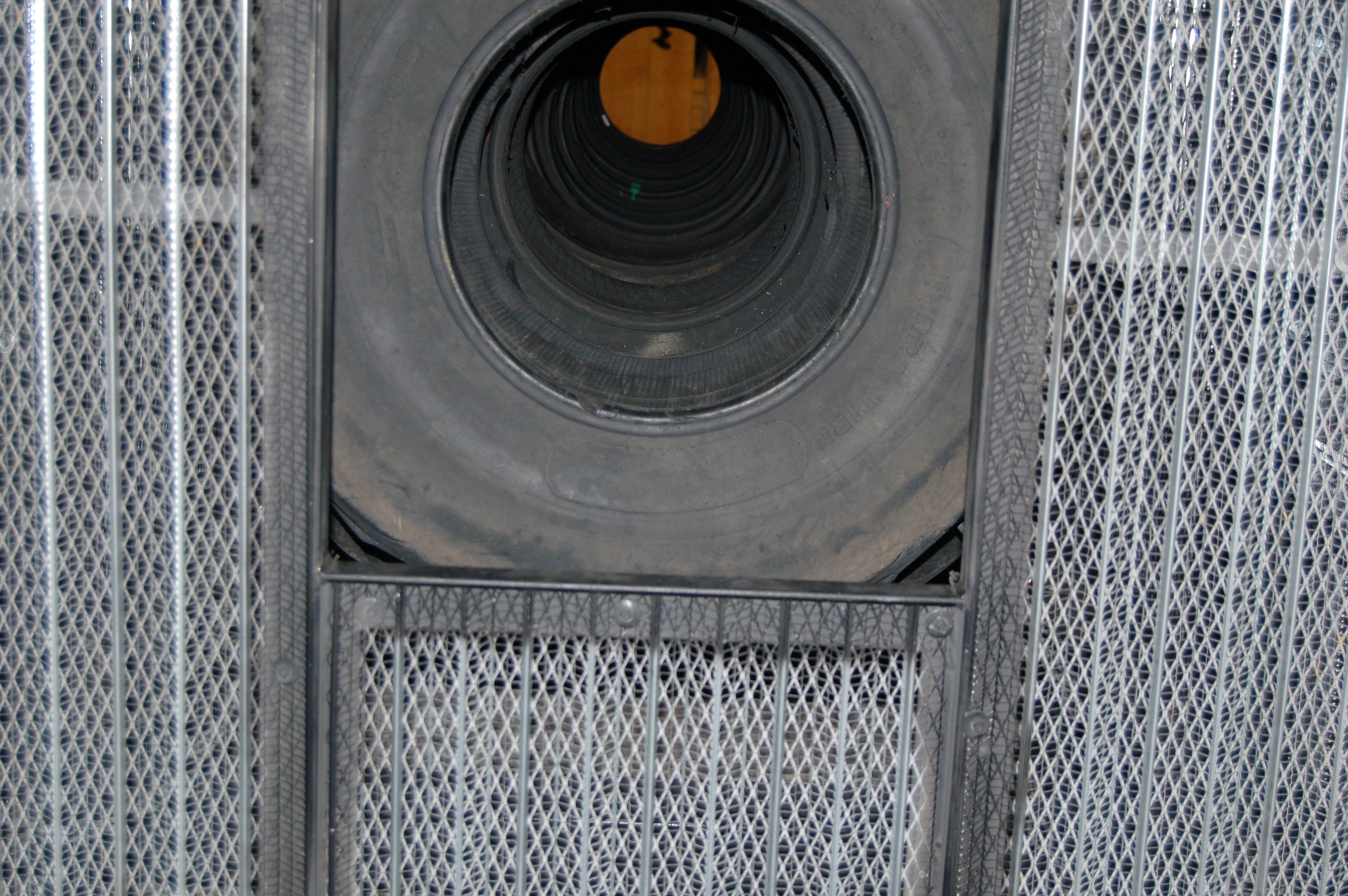Armament Overhaul/Test Facility
Hill Air Force Base
By David Killam
There's no mistaking the braying howl of a 30 mm gun. Stand near one when it goes off, your ear drums will be shredded and you will gain a new appreciation for American Sign Language. Test firing one inside a building is a significant challenge. A weapon with that capability generates a lot of noise, air pollution and a considerable shock wave.
Hll Air Force Base came to the Corps of Engineers in 2007 with a problem: Test firing of newly built or rebuilt 20 and 30 mm guns was done at the only available range, located a three hour drive from Hill Air Force Base, in the desert. Once calibrated, the guns are used on Air Force A-10 fighters; in Air Force and Navy F-16's; and Marine Corps Apache helicopters. The maintenance facility for the guns was at Hill. The guns went out to the range, were sighted and fired, brought back to Hill for adjustments and back out to the desert again to test the effectiveness of the adjustments. It usually took 5 people one week to do the testing. If the weather was bad, testing was postponed. There was no suitable outdoor site available on the base. The situation was frustrating and expensive for the Air Force.
The Air Force asked the Sacramento District of the Army Corps of Engineers to build an indoor facility, where the guns could be fired, calibrated and maintained. This would eliminate trips to the desert and would also ensure a safe environment where the weapons could be tested and observed under controlled conditions.
Engineers working for the Corps and the design/build contractor, HHI realized that the noise level and shock wave generated by these weapons could be considerable. One of the first steps taken was establishment of a unique collaboration between HHI and a team of acoustical engineers from Brigham Young University to determine how noisy the guns were. The team included several engineering students, some of whom were able to use this research opportunity to write their thesis projects. This acoustical engineering team used very sensitive and specialized sensors and equipment to determine the noise level and pressure waves generated by the 30 mm gun. The team then used the gathered data to generate 3D computer images of a structure that would best be able to dissipate the immense sound and pressure generated.
Tests revealed that the shock wave generated by firing the 30 mm gun inside an enclosed structure would be magnified. Engineers determined that the force from the gun was so great that unless right angles were avoided inside the indoor range, corners would "capture" shock waves from the guns, actually increasing the pressure generated due to a "stacking" effect of the shock waves, which would degrade the infrastructure of the building and risk the safety of the people working in the building.
"We worked with the acoustical team from Brigham Young University," said Greg Crosby, PE, quality control project manager from the contractor, HHI Corporation. "We did a lot of field testing and modeling to keep the design requirements within budgetary limits."
"Tests revealed that it was not unusual for the guns to generate 100 pounds per square inch of pressure," said Anthony Joseph, field inspection technician for the Corps. "That had to be remediated down to 3 pounds per square inch to be within acceptable limits."
Original specifications called for a building with utilities, parking, shop space and an earthen berm on all sides of the range.
A system had to be designed to minimize these impacts. But how to provide such a unique facility and still stay within budgetary limits'
Constructing a building that would ameliorate all of the force generated by the guns would have been prohibitively expensive.
"The solution was to design and construct a building that funneled and broke up the incredible sound and shock waves generated by the guns, with special emphasis placed on the 30mm gun, which had never been fired at an indoor range," said Jason Redeen, Project Engineer for the Sacramento District of the Corps of Engineers." Once the shop space and range were constructed the acoustical engineering team from BYU returned for testing. The results were positive, but because of information gathered about the 30 mm gun the team concluded that the range itself would not be adequate to contain the affects of the 30 mm gun without additional measures."
"We had a few late nights trying to figure out how to solve these problems," said Don Hokanson, CEO of HHI Corporation, who led the design and construction team that built the facility.
Robert Smith, HHI Corporation Vice President and Design/Build Manager, added: "One night I thought of an old James Bond film in which Bond used a silencer on his gun. "
This is exactly what the team designed and constructed. The muffler (or silencer) was designed to emulate the range surrounding it, so as to funnel and break up the sound and pressure, in the same manner as the range. The muffler has 12 inch thick walls and a 10 inch thick ceiling that are filed with a special acoustical insulation (which also lines the range walls) and several screens that keep insulation from being torn apart from the shock waves and prevent harm from coming to the expensive parts that comprise the gun, its motor and associated hardware. It took testing and one remodel of the muffler to reduce the pressure produced by the 30mm gun from 100 psi to an acceptable 3 psi. Through trial and error, it was discovered that a row of tires hung in the third stage of the muffler was effective in helping to reduce noise and the shock wave. The tires are hung by chains that are secured by I bolts. The force generated from a test fire was so great that the open-ended I bolts actually straightened out, which posed a safety risk. Beefier and enclosed I bolts had to be installed.
When the gun is fired it is aimed at a target mounted on A,A3/4 inch plywood, at the end of the range. Bullets from the 30mm gun have no trouble punching through the plywood into a chamber of steel clad concrete filled with gravel to capture the bullets. Periodically, the gravel in the bullet trap, which extends for 80 feet needs to be replaced. This is done by removing the 6x6 timbers which hold the gravel in place, then removing the gravel that is filled with slugs. The timbers are then replaced and the gravel refilled through ports that are accessible from the top exterior of the building.
To deal with the pollution issue the team installed a powerful filtered air exchange system that was designed and has proven to exchange all of the air with the room in 5 minutes.
Numerous safeguards were installed in the range to ensure that no one would be in the room when the gun fired. In the next room is a control complex. No gun can be fired until safety checks are made and the range is empty. Motion detectors inside the range will shut down firing if motion is detected in the range. Video cameras in the range also feed into the control room as an additional safety measure. They also record the firing.
"There's no telling what would happen to a person inside the range when firing was going on," said Redeen. "I don't think any of us are anxious to find out."
HHI Corporation was hired through the design/build mechanism.
rather than the customary competitive bidding process.
"Design/build is much faster," Redeen said. "The emphasis is on contractors who have a solid track record. And, during the process, the contractor can talk with customers, which is a much more responsive way of doing business. There's no other way we could have done this. We made so many changes to the design that the final structure was much different than what had been originally envisioned. Design/build gave us the flexibility we needed and allowed the contractor to be more innovative."
The building was completed in less than 2 years for approximately $7 million, not a bad price for such a high tech facility. From the outside, it's an innocuous building - there is no clue as to its function.
Tim Willard contributed to this story




Social Sharing